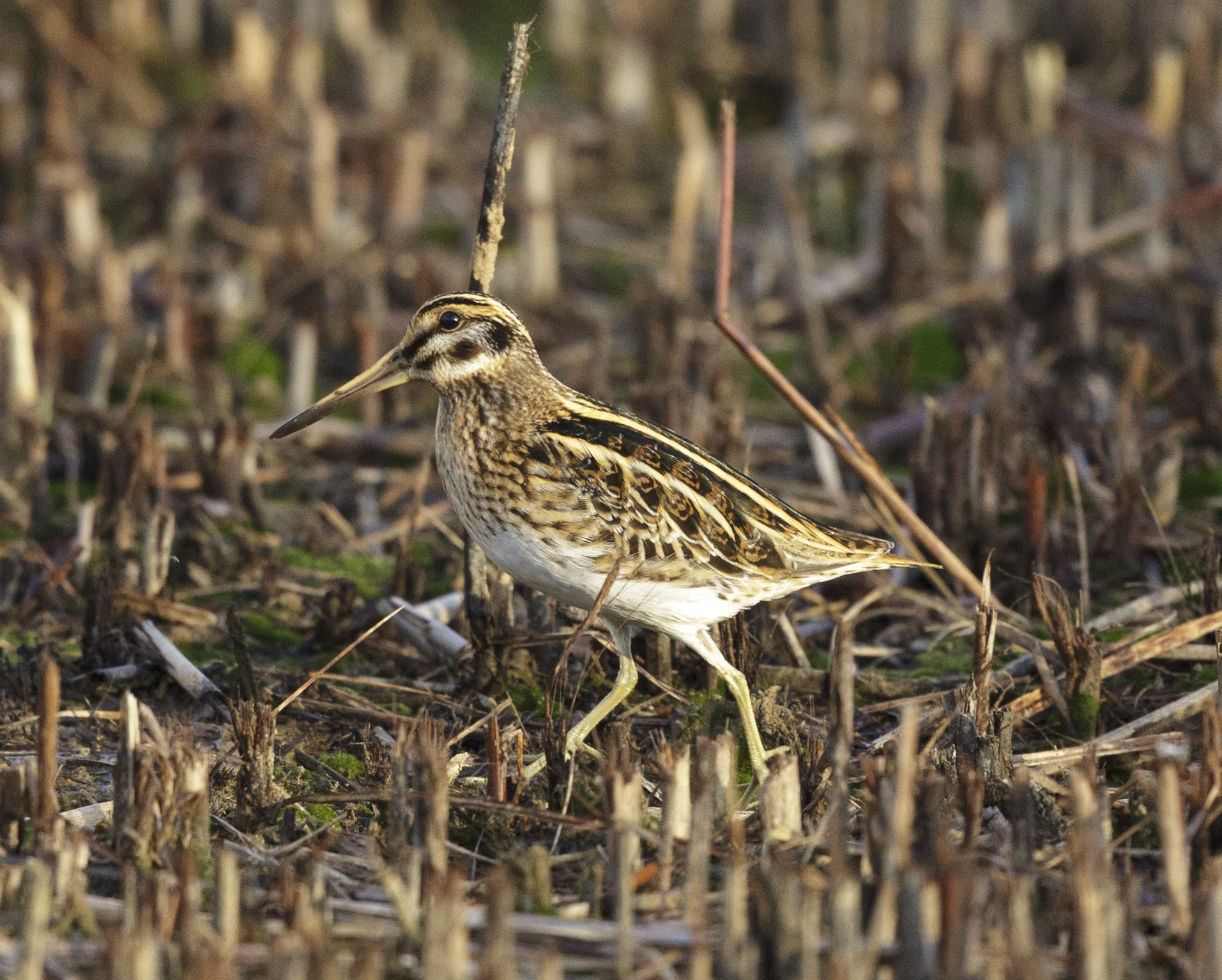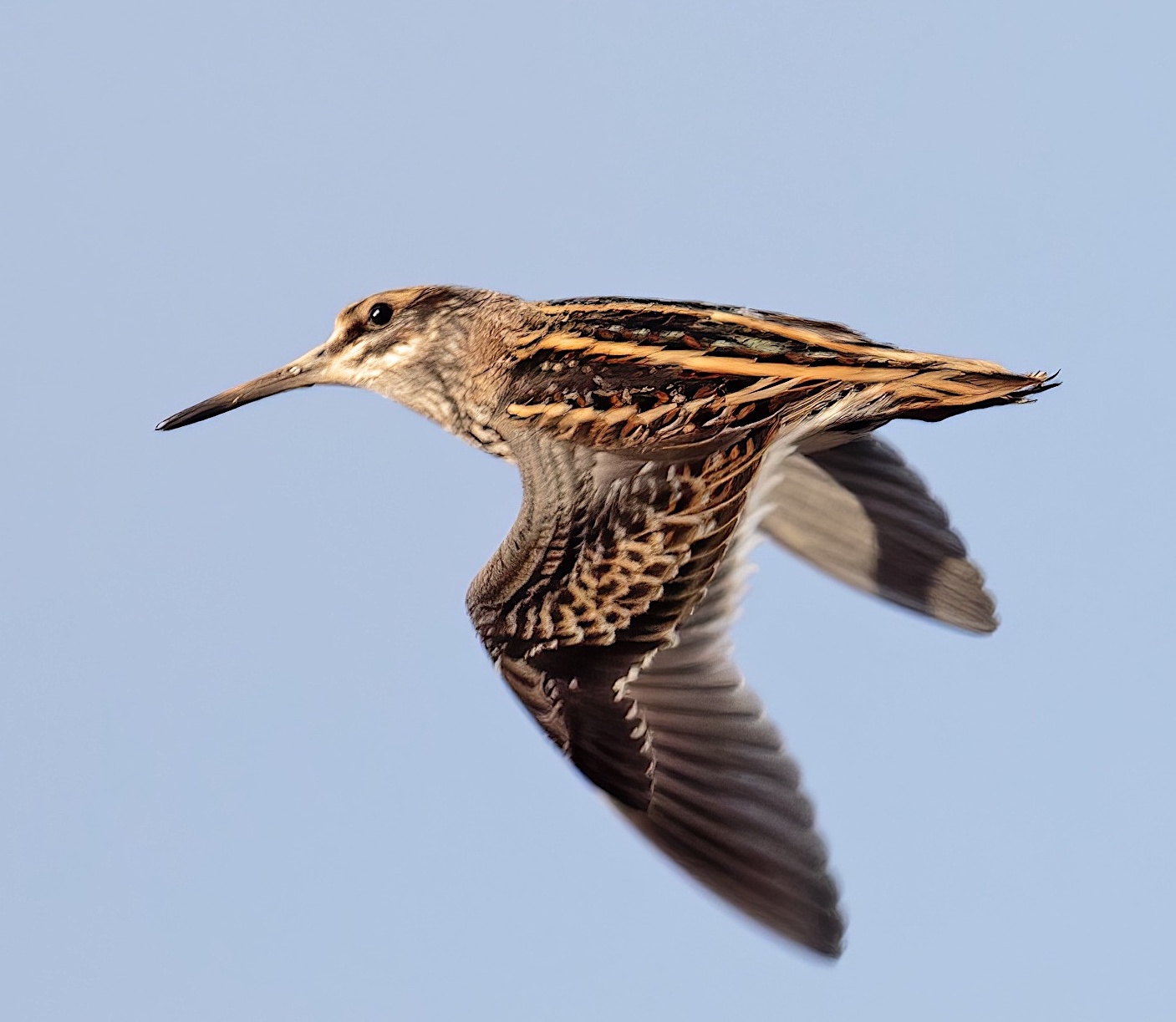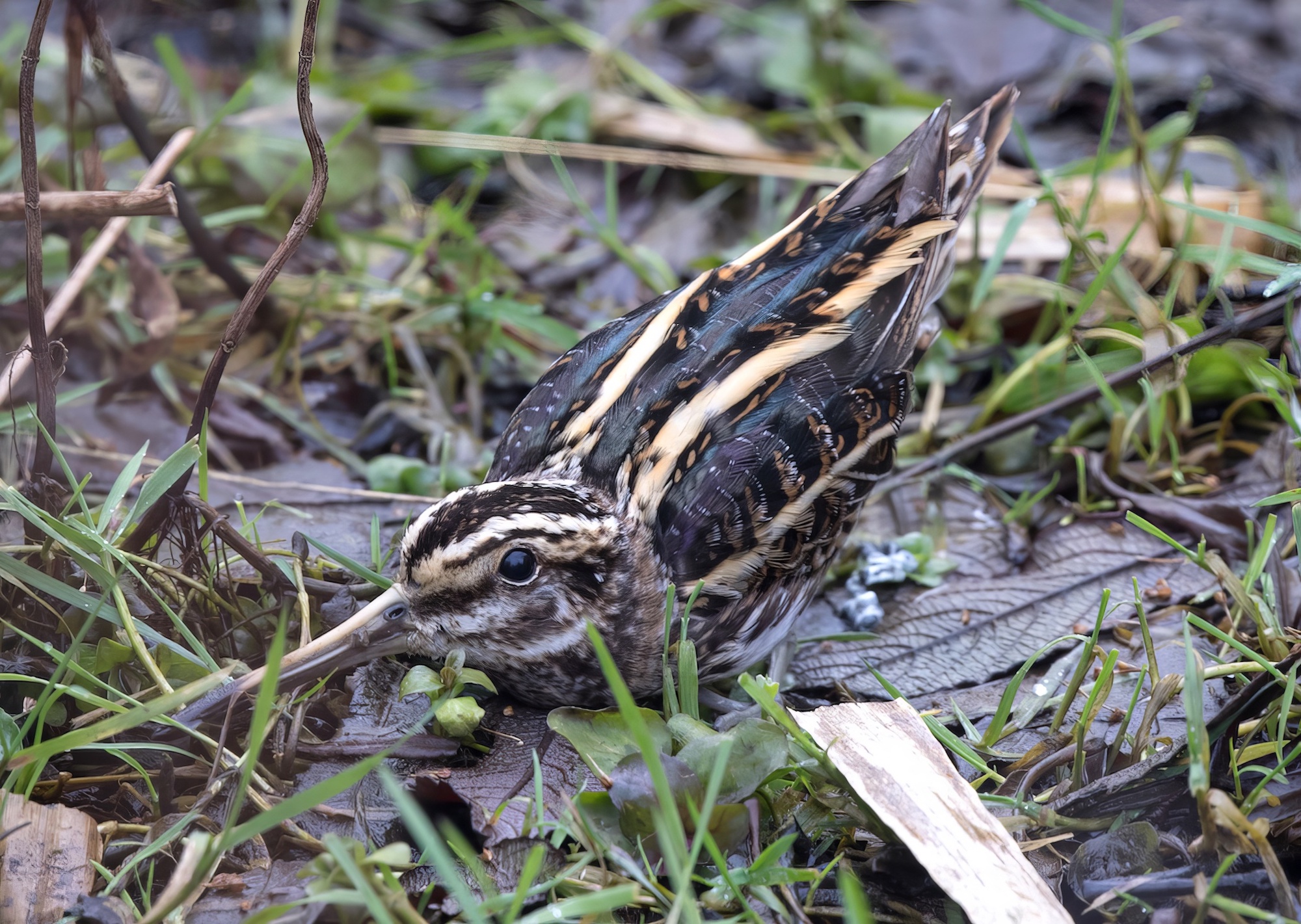Jack Snipe Lymnocryptes minima
Scarce passage migrant and winter visitor. Probably much under-recorded.



A fairly common autumn immigrant most years and there is a regular spring passage. The main arrivals take place October-mid-Movember, but as you don't usually see 'em, unless you flush 'em, this makes it difficult to get any real sense of how accurate the annual reports are or of trends. They can be reliably found in the same passage and wintering sites year in and year out. The BTO Atlas 2007-11 found them wintering in 35 10Km squares across Lincolnshire, with numbers greatest on the coast between Saltfleetby-Theddlethorpe NNR to Humberston Fitties and in the Trent Valley. In the six years to 2017 the peak monthly count each year reported in LBR ranged between January, March, October and November and from eight in 2012 to 28 in 2013 and 2014. As with Woodcock, most foreign-ringed birds recovered in the UK are shot, and most originate in northern Europe, Scandinavia and Russia. An adult ringed at Wisbech SF on 1st October, 1957, was recovered at Lozère in southern France November 21st, 1957, just over seven weeks later.
(Account as per new Birds of Lincolnshire (2021), included September 2022)
